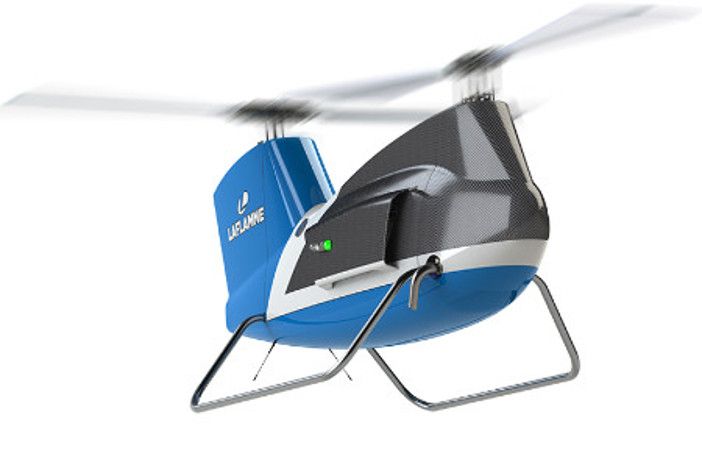Presagis’ drone simulation platform has been successfully used by Laflamme Aero to develop its LX300 cargo drone project
The 300kg (660 lbs) LX300 features a gas-powered engine, tandem rotors, and a capability to handle payloads of up to 90kg (200 lbs) in inclement weather conditions. The drone is being marketed for both military and civilian use.
The LX300 has been developed by Canada-based Laflamme and NGC Aerospace. Laflamme is designing and manufacturing the drone, NGC Aerospace develops autonomous guidance, navigation and control (GNC) algorithms for simulators and real-time operational software.
Stephane Blondin, vice president of product management and marketing at Presagis said, “From on-board equipment development using a validation and verification process, to creating rich research environments, UAV Craft’s modularity and flexibility has been a huge asset in the realization of the LX300.”
The UAV Craft simulator creates realistic environments and flight models and has the capability to model sensor functions. The simulator gives fully models control of avionics, aerodynamics, weight and balance, engines, flight control, navigation, payloads, weather, and can be used for payload training, test bench research, or new product development and design.
Laflamme said it used UAV Craft to validate and refine the ergonomics, helicopter model concepts, and simulate UAV prototypes, while NGC used it to refine and validate proximity object detection and collision avoidance algorithms and to perform a wide range of LiDAR sensor, and other hardware-in-the-loop simulations.
Enrick Laflamme, co-founder of Laflamme Aero, said, “By using UAV Craft for the flight model testing, our company was able to group more and more components into the flight envelope such as autopilot systems, GCS, navigation and helicopter models from the conceptual phase to real development. We were then able to refine all of these components through simulation to advance our development.”
David Neveu, project manager at NGC Aerospace, said, “Another validation approach often used in the industry is to test a system directly on an experimental aircraft. The problem with that is that the environment is not controllable and there are many uncertainties – it is also very inefficient, expensive, and time consuming.”
May 4, 2018





